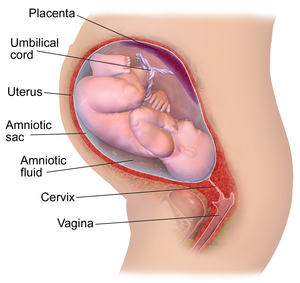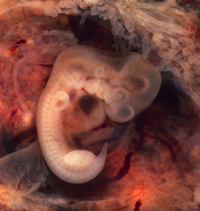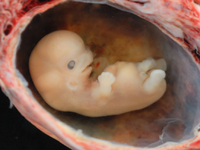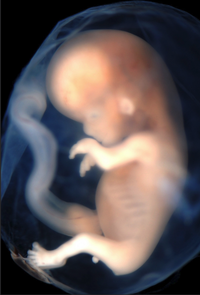Gestation
Contents
Key Stage 3
Meaning
Gestation is the period of time while offspring are developing in the uterus of a mammal.
About Gestation
- Gestation may be referred to as pregnancy.
- Gestation starts with conception and ends with birth of the offspring.
The offspring goes through several stages of development:
- 1. The ovum is released from the ovary.
- 2. The ovum is fertilised by a sperm.
- 3. The embryo makes its way to the uterus where it implants itself into the lining of the uterus.
- 4. The lining of the uterus develops into an amniotic sac, a placenta and an umbilical cord to protect and feed the embryo.
- 5. The cells specialise and the embryo becomes a foetus.
- 6. The foetus becomes fully developed and turns itself upside down so it can exit through the vagina head first.
| After fertilisation the ovum divides into two cells, then four cells. | This embryo has many cells that have not yet been given a specific job. |
| The cells in this embryo are being assigned specific jobs as it starts to look more like a human. | Once all the cells have been given their specific jobs it is called a foetus. A this point the offspring is preparing to live outside the uterus. |
Beyond the Curriculum




